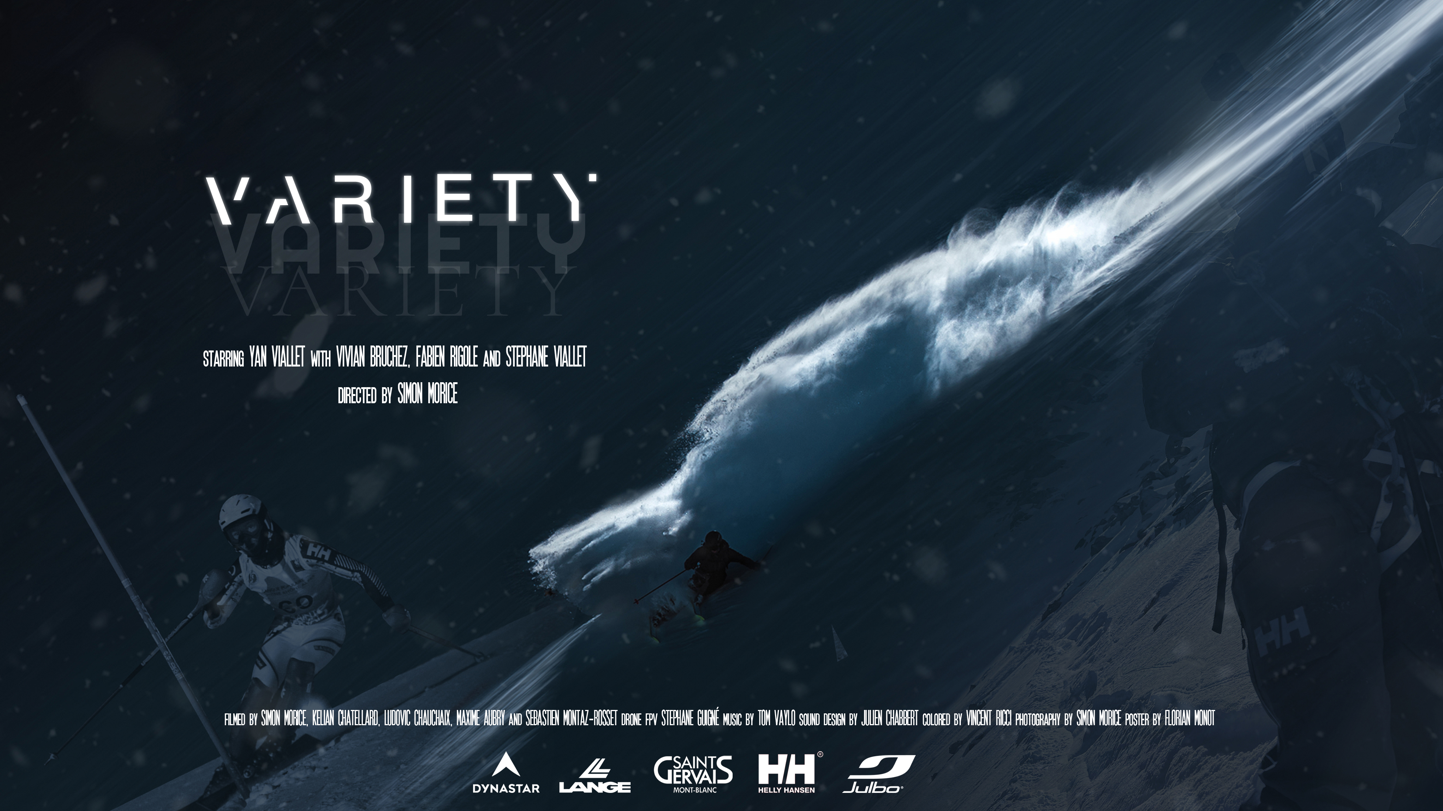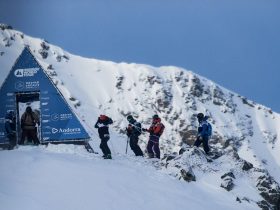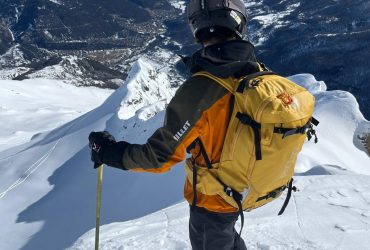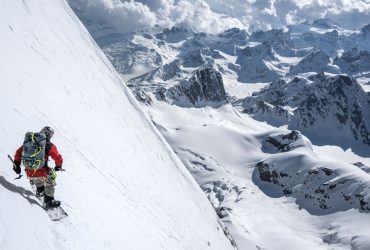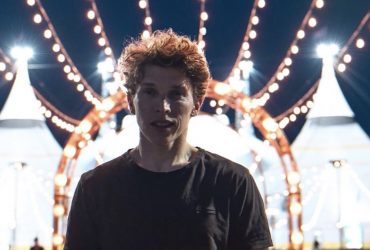Entering this year's Freeride Qualifiers, skier Yan Viallet has high hopes of joining the Freeride World Tour's main circuit in 2024. To convince us that the 20-year-old Frenchman can do it, his film "Variety" is a solid argument in favor of his talent. While we wait to see him on European faces this winter, we asked him a few questions about his latest production, made with his sponsor Helly Hansen.
After a 2022 season graced by two top 10 finishes, including a podium in Chamonix, Yan Viallet is back again this year at the Freeride Qualifiers. The young skier from Saint-Gervais-les-Bains is hoping to land one of the precious qualifying passes for next season's Freeride World Tour. He will be able to count on his versatility to achieve this, having tasted several facets of his discipline: alpine skiing with his late coach Nicolas Trappier (who will pass away in September 2021), steep skiing with his father Stéphane and Vivian Bruchez, and freeride skiing, where he flourishes today. It was to showcase this diversity of disciplines that Yan came up with the film "Variety" (see teaser below and full film on VOD at this address). And discover below the interview of the skier Helly Hansen about this production, its objectives this season and the support that the Norwegian brand gives it.
As the name suggests, your film "Variety" highlights the three disciplines you practice: piste, alpinism and freeride. That's something of a rarity in the world of ski films. Why this choice?
Indeed, I really wanted to show my universe and how I could get where I am today. It was obvious for me to go back to alpine skiing. It was my childhood and I owe all my technical bases to it. It was even more obvious to share this moment with Fabien Rigole who was my alpine coach.
Then ski mountaineering is also part of my universe, my father (Stéphane Viallet) who is a high mountain guide has passed on his passion for the mountains to me since I was very young. It is in ski mountaineering that I feel closer to the mountain and really alone with it. I also had the chance to share this descent with Vivian Bruchez who is an icon of the steep slope.
Finally the freeride skiing, which is my current discipline, where I find myself. Creating your line, preparing it, leaving your mark on the mountain is what drives me the most.
The film is also an opportunity to pay tribute to your former alpine ski coach Nicolas Trappier. How much did he mean to you?
Nicolas was passionate about the mountains. He was my alpine ski coach for two years before becoming a true friend. He was always motivated for a hike or an outing in the mountains. He taught me a lot about life and the mountains. It is with this film that I wanted to pay him a last tribute in my own way.
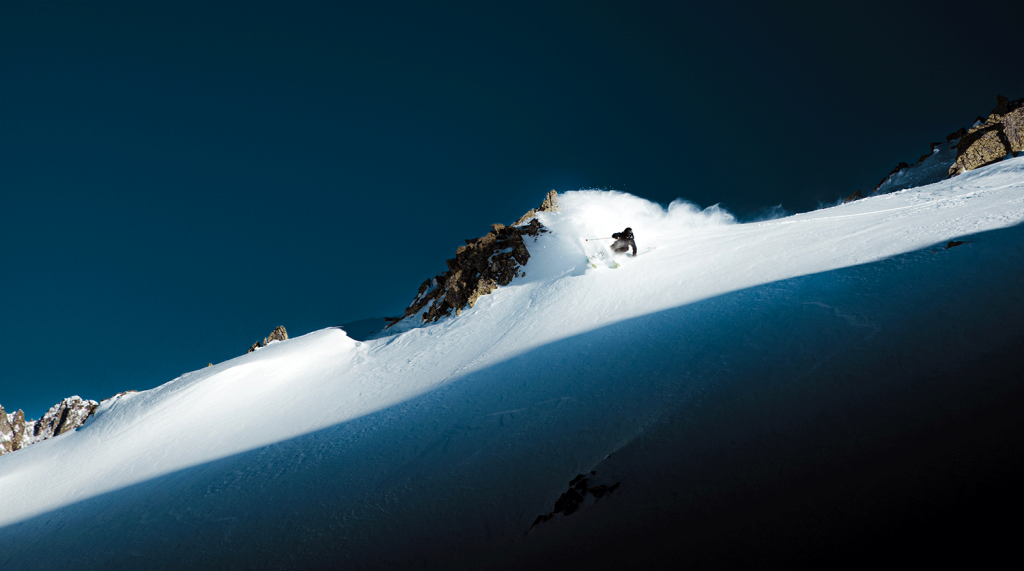
Unlike some people, you don't only live through beautiful images, you are also a competitor on the FWQ. How did you manage the creation of the film and all the shooting in parallel with your competitions?
I've always had a competitive spirit. It all started in alpine skiing before I turned to freeride. I must say that I was lucky because the timing of the shootings and the competitions coordinated very well. In my head I was thinking a little bit more about my project because it meant more to me than a season of competitions. Nevertheless, I was very focused at each start to achieve the best performance.
Which spots did you choose for the film and why?
In alpine skiing, I chose to shoot this part at night in Saint-Gervais because it is here that I learned everything and we shot at night to bring an additional originality to the images.
In ski mountaineering, we chose to shoot in Chamonix on the Glacier Rond. Because it was the best option in terms of conditions and organization and because the chosen route was technical and impressive.
Finally, for freeride skiing, I chose to shoot in Saint-Gervais, my hometown, which has some iconic spots for me. We also went to La Flégère (Chamonix) for big freeride runs. I also shot two runs in Les Contamines because the conditions were very good here and offered beautiful images. Finally, I went to the Vallée Blanche because I wanted freeride images with a wild and glacial atmosphere.
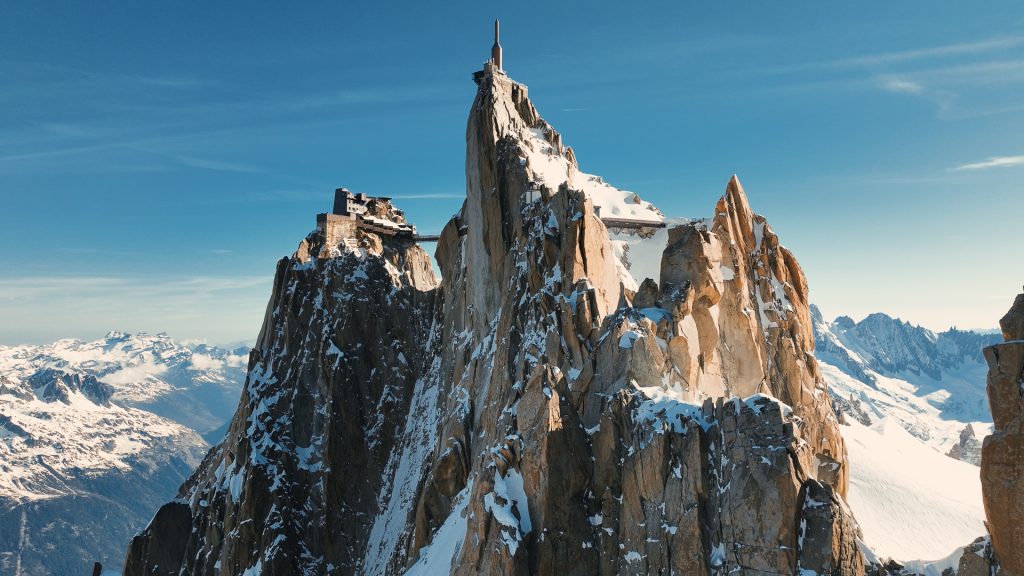
You shot with Simon Morice when neither you nor he had ever been involved in the editing of a film of this scale. What were the difficulties you encountered during the shooting and preparation of this film?
I chose to partner with Simon because I really wanted to get into the professional world. As for the organization of the shootings, I am lucky to have a good network and good contacts (cameramen, ski lifts...) who really helped me with that. The only difficulty was to get everyone together at the same time. And of course, we were also dependent on the snow conditions. The big difficulty was the post-production. We had to think about the story, the editing. There were about 10 versions before we found the right one. Because even with beautiful images, if the editing does not follow, it will be felt in the film.
How important is making a film in the career of an outdoor athlete? Is it a requirement now?
Nowadays with the rise of social media, I think it's a must for a rider. Brands are more open to finding a rider who is able to produce video and photo content than a rider who focuses solely on competition. But I don't think it should be forced. There has to be a real purpose behind the project.
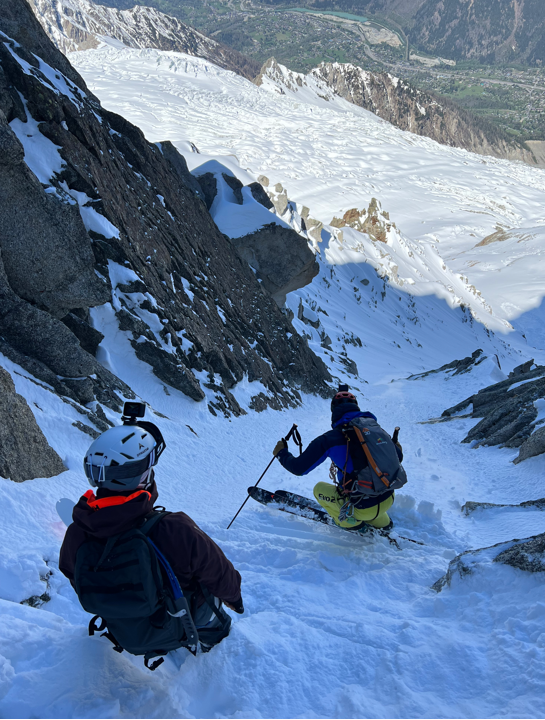


"Variety" was selected for several festivals. Did you take part in any screenings? How has the film been received and what experience have you gained from it?
It was an experience that taught me a lot. The film was very much appreciated. What stands out a lot is the feeling of passing on and sharing the ski and the mountain.
On the competition side, you have already made several top 10 on the Qualifiers circuit, how do you approach this new season and what are your objectives?
Last year I finished my season with a title of vice-champion of France. This year I am fully motivated to achieve the best results possible and qualify for the FWQ finals in order to join the FWT.
What are the criteria to reach the FWT? And what are you still missing technically and/or physically to get there?
To make it simple: on the FWQ circuit there are competitions with different levels (1, 2, 3 or 4 stars). The higher the number of stars in the competition, the more points you score. Then there is a ranking that groups our three best results (up to 52 weeks). When we register for a competition, the riders are ranked according to this list, and it is this ranking that determines if we participate in this competition. For example for a 4 star event only 30 riders are selected. Then until the end of February the riders participate in competitions to score the most points and qualify for the FWQ finals. After that they participate in three events where our two best results count and the first four go to the FWT.
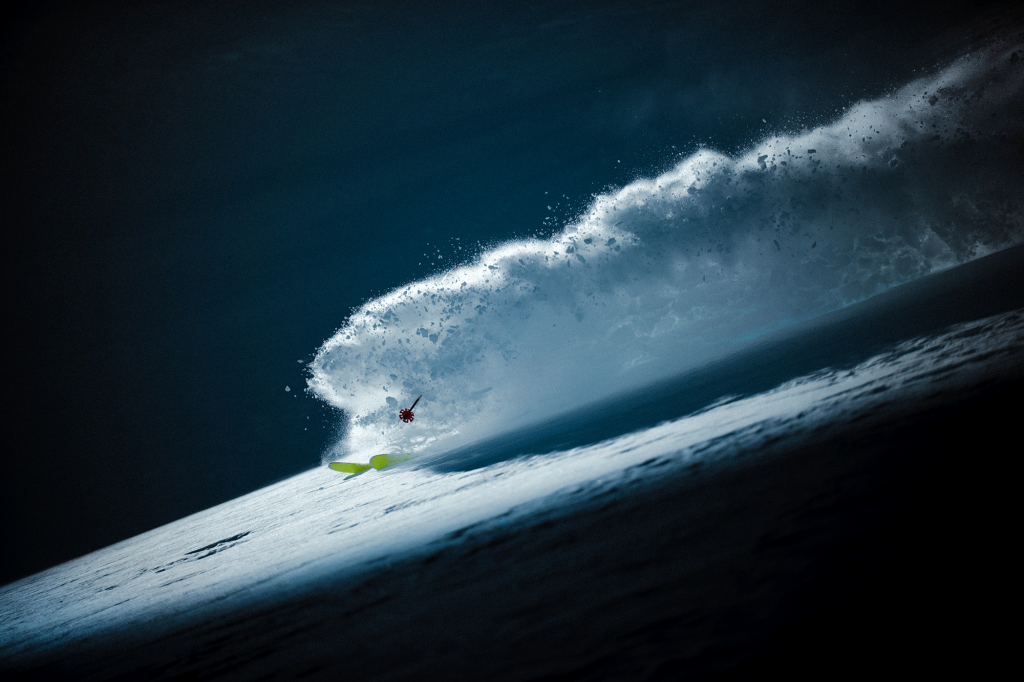
Are you still a student at the IUT of Annecy ? After your studies, do you consider serenely the transition to professionalism at 100% ?
Indeed I am still a student at the iut of Annecy in GEII (electrical engineering and industrial data processing) in adapted section. My goal is to continue to study at least until a Bac +3. I am also following the curriculum to pass my ski instructor diploma. My passage to professionalism at 100% is still unclear. I want to live from skiing and video but it's still very complicated. You always have to have a way out.
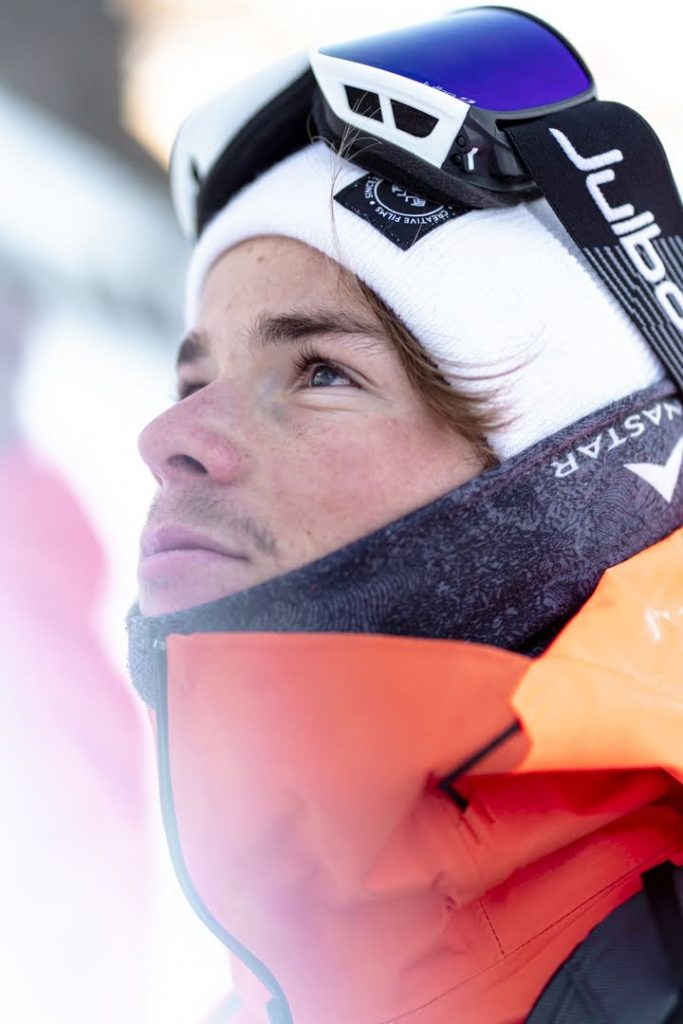
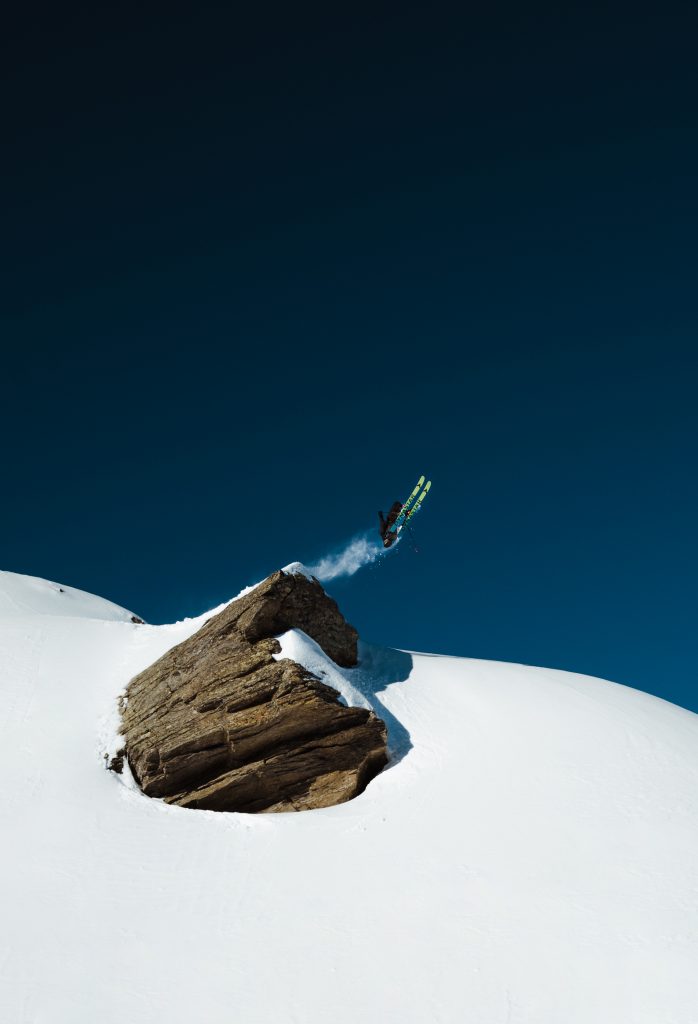
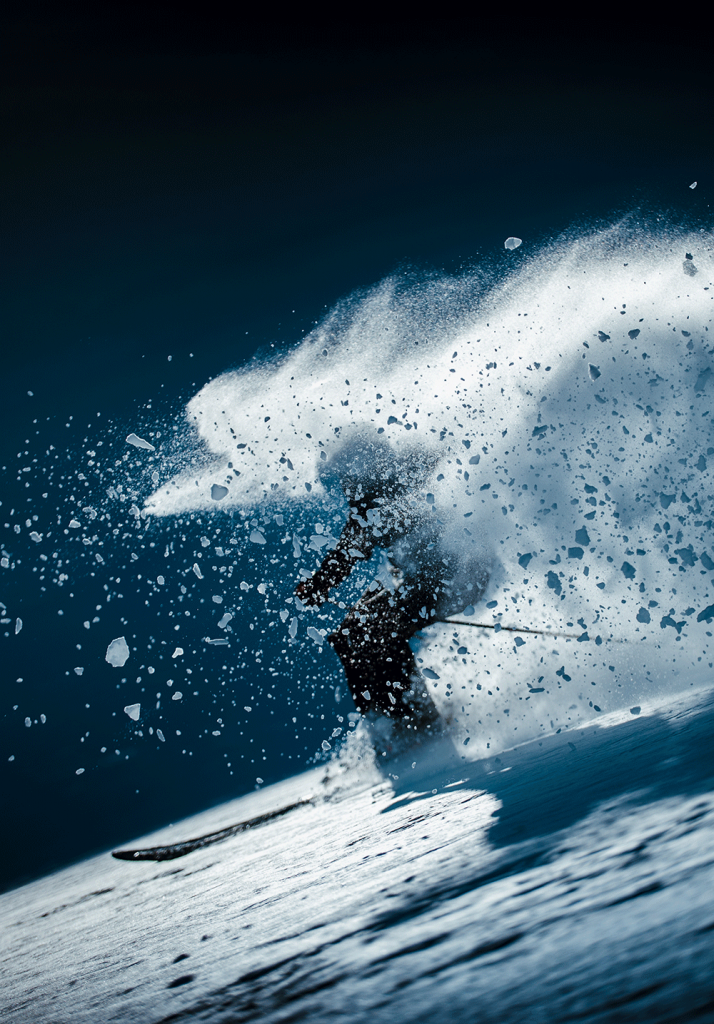
How does Helly Hansen help you in your life as an athlete?
Helly Hansen provides me with textiles all year round. They also help me financially for my competitions and video projects. For me, a sponsor is a real partner who follows me and supports me in everything I do. They also give me a certain visibility by using my content.
What branded gear will you be using this season?
I use their freeride products (jackets, pants, underwear...), but also mountain and everyday products. For the film, for example, I had an outfit adapted to each discipline.
See this post on Instagram






